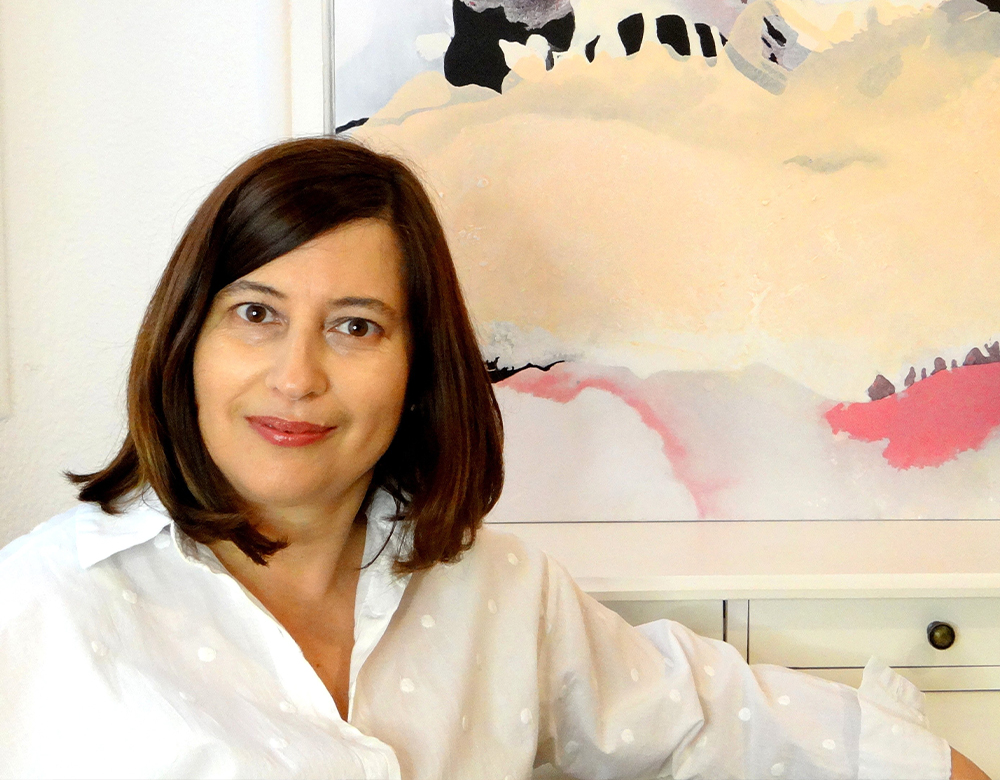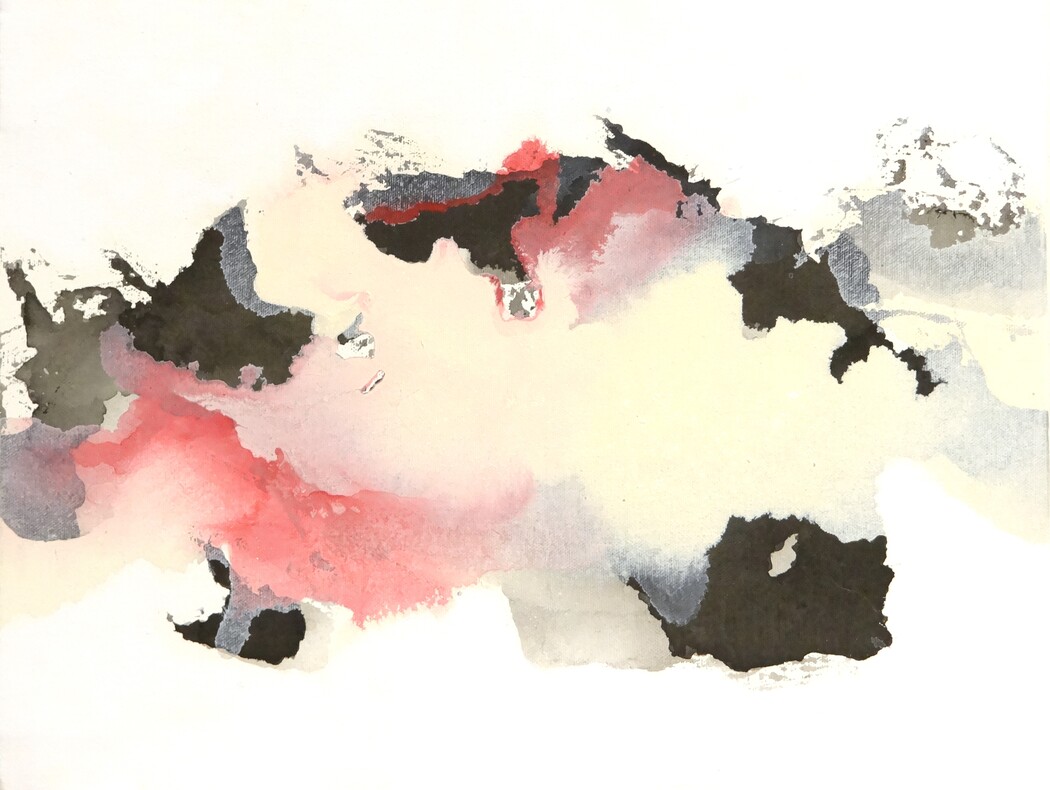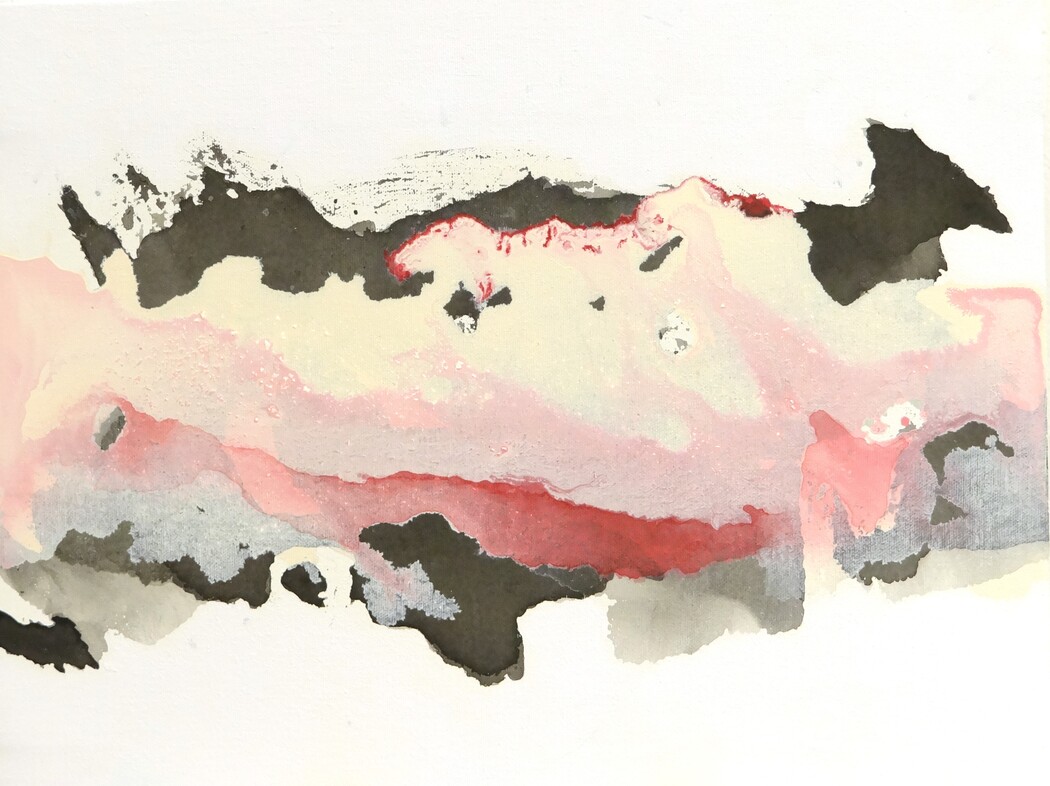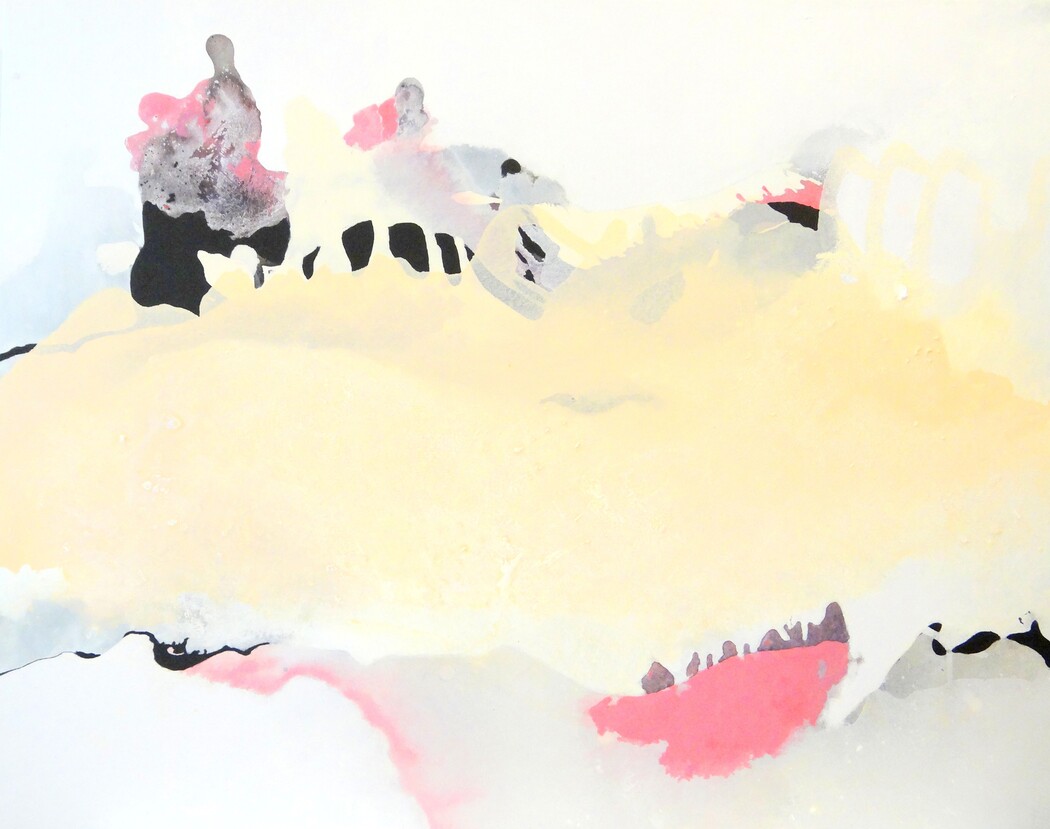Sonia Hernández
Where do you live: Madrid (Spain)
Your education: Dance and design studies, Bachelor’s degree in Fine Arts, and Master’s degree in Research and Creation in Contemporary Art.
Describe your art in three words: Emotion, sensuality, balance.
Your discipline: Painting, drawing, and printmaking.
Website | Instagram

Could you tell us more about your artistic journey and what led you to explore abstract expressionism and informalism in your work?
My artistic training began in the world of dance. I studied classical and modern dance during my childhood and youth, and then entered the Faculty of Fine Arts, specializing in Visual Arts. Initially, art students worked with classical models and realistic, figurative references. This somewhat constrained me; although I admire highly finished forms in other artists’ work, they seemed rigid to me. As a result, I began to experiment with different styles to build my own language. This is how I arrived at abstraction, where I felt very comfortable and free to express myself.
Informalism and abstract expressionism allow me to imprint very diverse rhythms and tempos onto my works. In the end, I experience a similar feeling to the one I had with dance, where energy and momentum drive the creative process. My relationship with painting could very well be likened to dance—a dialogue of advance and retreat. The four corners of the canvas place me in space, and through the elements of abstract visual language, I construct what I want to express, which of course begins with a minimal idea that always changes and develops in different directions. But you still recognize it when it appears, as part of the final result.
Your project “Mystique Garden” is inspired by Japanese culture, particularly sumi-e painting. How did this cultural influence the aesthetic and overall theme of the series?
On a personal level, I’ve always enjoyed using brushes, Chinese inks, and Japanese papers to play and simply enjoy the random stains they create, the different thicknesses in the density of the stains, and the intensities of different black tones. I believe that with very simple materials, a great pictorial richness can be achieved. Initially, the drawings came from my personal artist’s journals. As I mentioned in the previous question, I wasn’t doing sumi-e painting in its strictest, most realistic sense—like birds, bamboo canes, flowers, etc.—but rather creating from free and spontaneous forms.
On the other hand, pink is a color that really appeals to me, and I love Japanese prints filled with cherry blossoms. So I started adding pink to those compositions, and little by little, the idea of creating the series began to take shape.
 Sonia Hernández | Mystique Garden | 2024
Sonia Hernández | Mystique Garden | 2024
You mentioned that “Mystique Garden” is a representation of imaginary landscapes. How do you approach creating these landscapes without falling into realism, and how do you encourage the viewer to interact with them?
Linking to the previous point, Japanese painting is very much about the landscape, and it was on my mind while making those first sketches. The forms that appeared were so diverse that I thought they could very well be some kind of living organism, like a garden where multiple species find their home. This, of course, is my fantasy, and it’s also something I like to present—the idea that I don’t fully understand what emerges. That’s why the title “Mystique Garden” seemed so appropriate. Presenting the paintings to the viewer as places they can freely explore allows them to find their own spaces, which helped me further develop the series.
For me, it doesn’t make much sense to paint a realistic-style landscape. Many artists do that very well. In my case, I’m seeking something else that has little to do with literal representations—like Mount Fuji—but then the viewer can believe they see it represented in one of my paintings. I think that’s perfect. I paint the painting, but it’s the observer who gives it an identity, making it their own. I love that.
How important is the idea of “movement” and “fluidity” in your work, especially in relation to the marks and textures created with ink, acrylic, and watercolor?
These two concepts are fundamental, especially in this series. Working with stains involves a constant element of risk because, in principle, you can exercise very little or no control over them. If you add materials where water is the protagonist, such as watercolor and ink, the uncertainty about the outcome is total. Then, in the creative process, you must flow first in order to give shape to something that is so elusive at first.
The movement of the materials themselves—their marks and paths on the canvas—gave me clues on how to work in one direction or another, either allowing a certain form to emerge or covering it with a new one that wasn’t initially predictable. The paintings have several layers until they achieve their final appearance, and in the creative process, I’ve already experimented with both ideas, which is why they are so present. Here I could also connect with what I mentioned at the beginning of the interview: how the impulse that comes from dance, from bodily expression, underlies my pictorial work, which often has that “rush” of energy.
 Sonia Hernández | Mystique Garden | 2024
Sonia Hernández | Mystique Garden | 2024
Could you tell us about the intuitive process you use when creating your pieces, especially in relation to the freedom offered by ink stains and textures?
In my work, there’s always an initial theme—something that ignites the spark. I’ve worked in series with diverse references, such as clouds and their multiple ways of forming and dissolving, fragments of poems by authors I like or that I write myself, or places that have particularly impacted me and awakened me on a sensory level. These experiences are later translated into the painting, like the series before Mystique Garden, born after a trip to India.
That’s the beginning, but as you say, there is an intuitive process. I make very few sketches; it’s a very on-site work. I usually have a clear idea of the materials and color palette, but the rest emerges little by little, and that’s what motivates me—the almost uncertainty of what will emerge. The freedom of stains, gestures, lines, textures, and supports allows for a dialogue that can change every day. I think there’s growth for me as an artist and results that can be interesting for viewers later.
The concept of “journey” is significant in your work. Could you tell us about the personal journeys or emotions that influenced the creation of “Mystique Garden”? How do you perceive the idea of the “puzzle” in your work, where individual pieces come together to form a larger whole? Does this reflect a deeper philosophy or theme in your practice?
The concept of journey is fundamental, first of all because, for me, artistic creation is a journey in itself. It’s an experience you enter without knowing what’s next, and it’s a discovery. If I already know everything, then it’s pointless. I’m going to quote Edward Hopper here when he said that if you can explain it in words, then there’s no point in painting it. Going into the unknown is in itself traveling.
And I like the idea of an emotional journey because it’s true that there’s a heartbeat in my work. In the case of Mystique Garden, it’s curious because the idea of landscape suggested to me the possibility of serenity that lies within contemplation itself, which is even meditation—something I practice daily and is deeply rooted in me. However, when I exhibited the work, many people told me they saw great strength and dynamism in some pieces, so it was evident that other emotions were at play. This is related to that part of my work in which, in principle, I neither have nor want to have control.
On a formal level, Mystique Garden can function as a large puzzle; the pieces work together and separately. This doesn’t necessarily occur in my other series, but it does on an aesthetic level and as a theoretical discourse. The idea links one painting to another because I usually start a series after that initial spark and develop it without knowing if there will be 5, 10, or 20 pieces. So it unfolds on its own until I realize it’s exhausted, and then I want to start something else. Although I may have in mind to return to this, it doesn’t always happen.
 Sonia Hernández | Mystique Garden | 2024
Sonia Hernández | Mystique Garden | 2024

Leave a Reply